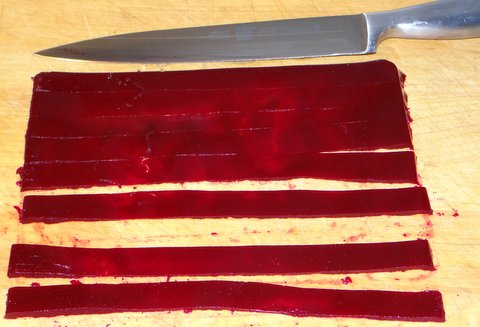
When I say beetroot tagliatelle, I don’t mean tagliatelle flavored or colored with beetroot, but tagliatelle made of mostly beetroot, without any flour. It is a simple form of modernist cuisine (not capitalized, since I’m not referring to the book). I had eaten tomato tagliatelle at Piazza Duomo, one of Italy’s best restaurants in Alba, and thought I could use agar agar to try something similar with beetroot. I don’t have a juicer so I used beetroot puree rather than beetroot juice. Agar agar is a gelling agent that is made from red algae that has the interesting quality that the gelling process is reversible: just reheat to above 85C/185F and it will become liquid again. Turned out that I was reminded of that the hard way, but more about that later.
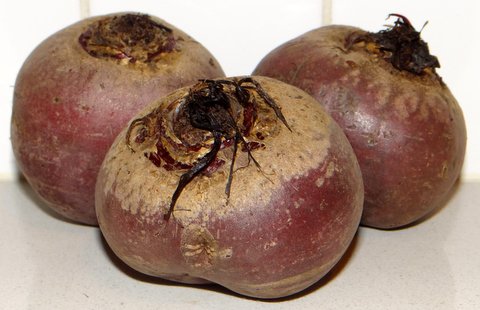
I started with 800 grams (1.8 lbs) of raw beetroot.

I wrapped them in foil and roasted them in the oven at 200C/400F for an hour and let them cool in the oven overnight with the door closed. (If you are in a hurry, you can also roast them longer until they are tender, about 90 minutes.)
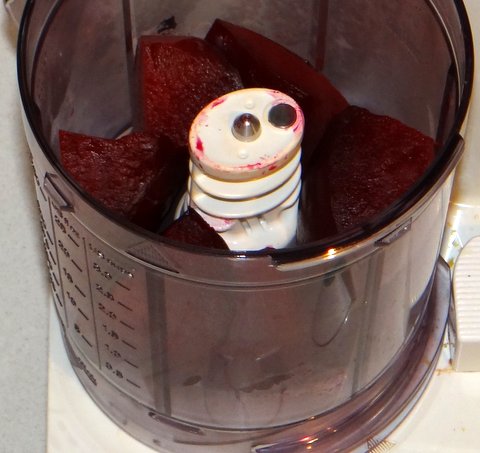
I then rubbed off the skins, cut the beets into quarters and put them in the blender.
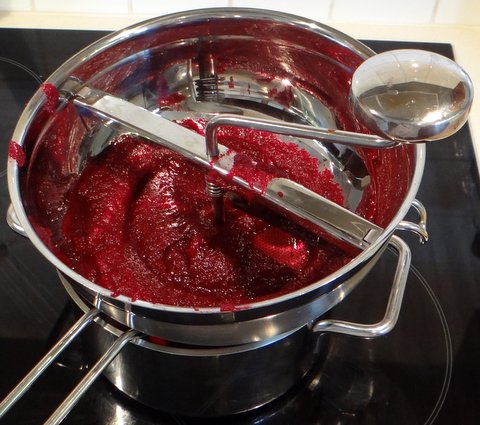
I passed the puree through a sieve to make sure there were no big parts left.
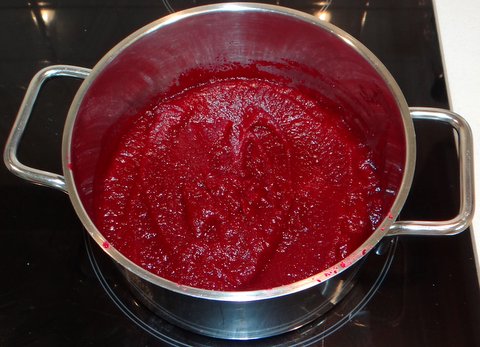
I put the beetroot puree in a pot and added 1/2 tsp salt, 2 Tbsp sugar and 2 Tbsp red wine vinegar to enhance the taste.
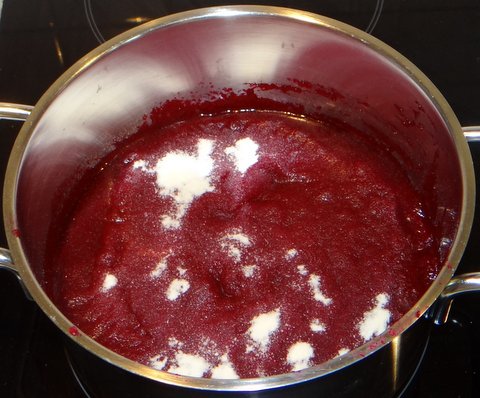
I also added 20 grams (.7 oz) agar agar.
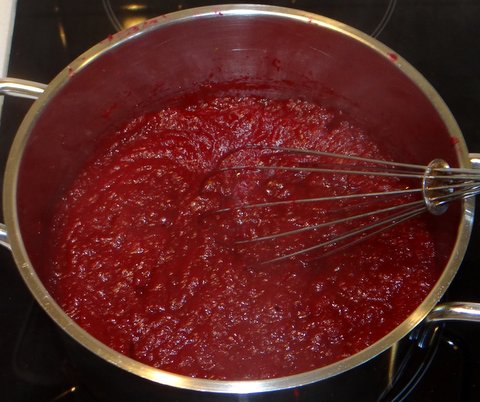
I brought this to a boil while whisking to activate the agar agar.

I made a layer of the agar agar-beetroot puree in a flat plastic container. Since I was using beetroot puree rather than beetroot juice, it was impossible to make a very smooth layer. I used about a quarter of the beetroot puree for one layer, so I had to repeat these steps four times.
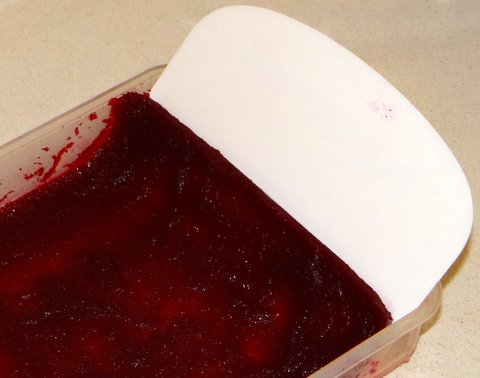
I set just by letting it cool. I used a dough scraper to remove the sheet of beetroot jelly from the plastic container.
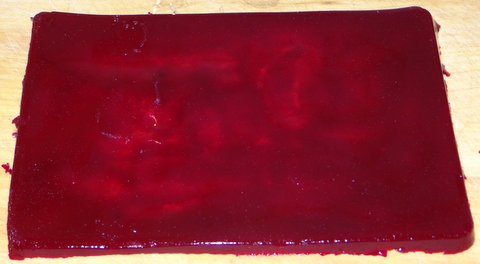
I put the sheet of beetroot jelly on a cutting board.

And I cut the sheet into tagliatelle of about 1 cm (1/2″) wide.
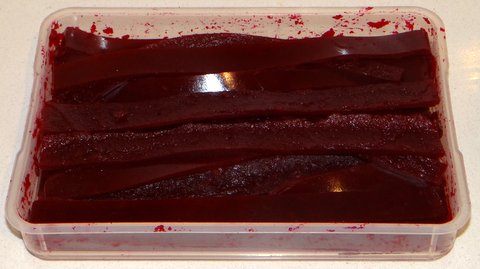
I repeated this to obtain a nice stack of beetroot tagliatelle that I stored in the refrigerator until it was time to serve.
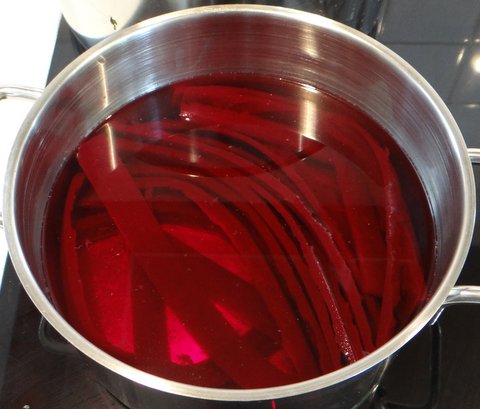
For serving, I put the beetroot tagliatelle in hot water of about 75C/170F, making sure not to heat above 85C/185F because then the jelly would liquify again.
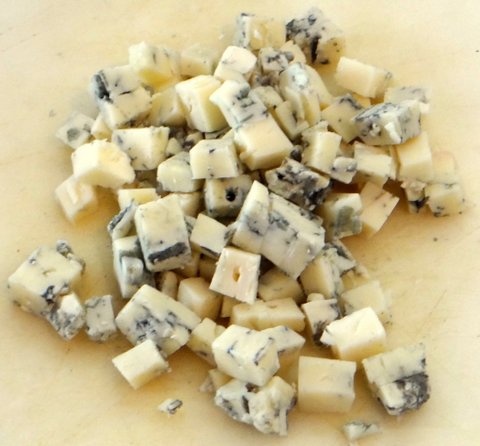
I diced some gorgonzola to serve with the beetroot tagliatelle.
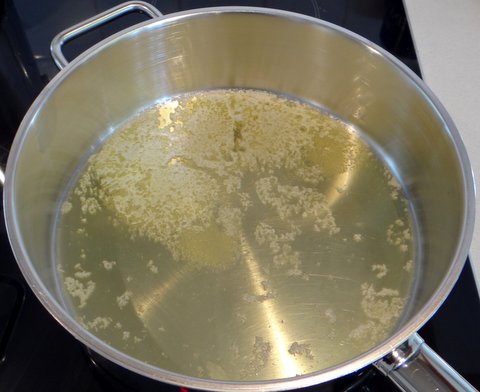
I wanted to serve them with melted butter as well as the cheese, and this is where I went wrong.

After draining the beetroot tagliatelle, I added them to the pan with the melted butter to coat them with butter, forgetting that the pan was well above 85C/185F, and thus my lovely beetroot tagliatelle started to fall apart. Next time, I will pour on the warm butter, making sure it is not too hot.
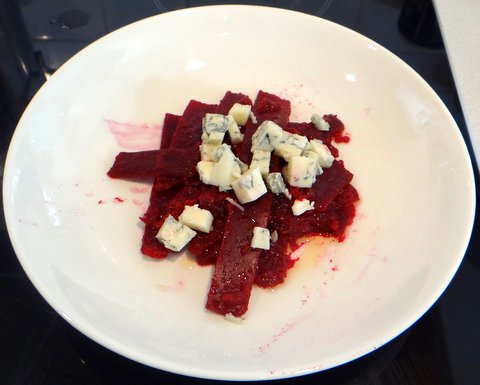
It still looked and tasted quite nice. With beetroot juice instead of puree it should be possible to make beetroot tagliatelle this way that are smooth on both sides.
We drank a glass of dry red lambrusco with this, which was an outstanding match! Please make sure to use a good quality of ‘secco’ lambrusco rather than the cheap plunk that lambrusco often is. (The good stuff is still not expensive at all.)

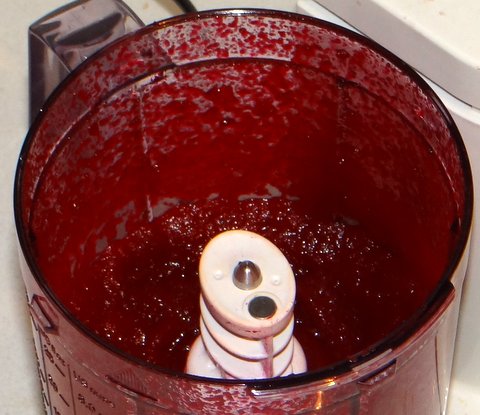

I love the approach and technique. Modernist cuisine is just plain fun. As for the butter, why not make Beurre Monté next time? You can do all sorts of things with it to add additional flavor or just keep it buttery however you like.
LikeLike
I only know beurre monté as a poaching liquid, not as a sauce. Perhaps something to try, thanks for the suggestion.
LikeLike
Excellent invention again Stefan. You had a close call with the butter.
Best,
Conor
LikeLike
I felt pretty stupid when that happened, especially since I had my parents over for dinner.
LikeLike
I just love following your kitchen adventures! I don’t want to spend that much time in the kitchen right now, but I enjoy learning along with you. Thanks again!
LikeLike
You’re welcome!
LikeLike
I’ve been dying to experiment with some agar agar…seeing some results from you, I’m going to have to give it a go soon.
LikeLike
Would love to hear your results!
LikeLike
I’ve wondered about agar agar and now that you’ve opened the door, I just might enter the laboratory myself. Thanks.
LikeLike
I find this fascinating.
LikeLike
A fancy recipe! But at least I wouldn’t need a sous vide gadget 🙂 This would definitely impress my gourmet group. Can you use plain gelatin? If not, where do you get agar agar? To date, my fanciest beet recipe hasn’t advanced much farther than beetniks… http://cookupastory.wordpress.com/2012/11/19/the-beet-goes-on/
LikeLike
I think you could use plain gelatin, but you should probably try out how it reacts to heat etc. to avoid the falling apart issues that I had. The main reason for using agar agar is to keep it vegetarian (as gelatin is made from bones).
Agar agar comes from south-east Asia, so an Asian store is the place to go.
LikeLike